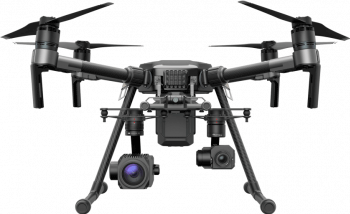

Infrastructure is one industry that can derive significant benefits from the regular use of drones.
One of the clearest reasons for using a drone on a construction site is its ability to produce aerial surveys at high speed and efficiency, giving the contractor quick and accurate topographic maps and digital surface models (DSMs). These are usually time-consuming, expensive exercises for large linear projects.
This will then produce a base map that can be used for the duration of the project. Depending on the type of construction or project, these topographic maps might need to be regularly produced, increasing the efficiency and speed of development.
Data collected at a certain point of time can be used for multiple purposes and can serve as a snapshot of a building. It can be digitally saved for future improvements of operations.
Accurate data
The raw data is generally high-resolution 2D imagery; this data can be converted into maps and used as a tool to monitor the progress of the site. The monitoring can be done merely by looking at all the information gathered, but the technology today allows us to convert this data into a 3D model with accurate geographical information.
 This data has many benefits, such as inventory tracking by means of volumetric calculations. It can even be integrated into the building information modelling (BIM) of a project, enriching existing intelligence by adding an extra layer of information. A simple example is the use of the data to compare the current, as built, information with the pre-existing plans for early detection of faults or deviations.
This data has many benefits, such as inventory tracking by means of volumetric calculations. It can even be integrated into the building information modelling (BIM) of a project, enriching existing intelligence by adding an extra layer of information. A simple example is the use of the data to compare the current, as built, information with the pre-existing plans for early detection of faults or deviations.
On top of that, management or the project owner will not need to conduct regular live inspections. The as-built digital format delivered to their computers will have a bird’s eye view in a high-resolution format. Frequent monitoring will lead to improvement in the speed of communication between the multiple stakeholders and, as a result, faster actions being taken to improve the life-cycle of a project.
Drones can also check the integrity of structures such as scaffolding during construction, or do the field check and quality control before handing over the project once it is completed. An optical sensor can search for defects and errors in the finishing.
Because drones are flying overhead and need minimum space for landing and take-off, almost all drone operations do not interrupt normal day-to-day activities.
Live feedback
Beyond using a drone for geographic information system (GIS) and BIM purposes, a drone can be used for surveillance. Live video feedback to the operations or security rooms reduces the need for regular patrols. An eye in the sky improves safety and security almost instantly. Less health and safety infractions will be committed, leading to fewer accidents, and illegal or irregular activities can be quickly detected.
Another benefit to drone surveillance is the reduction in insurance costs. Many insurers now offer a reduced premium if sites are using drones for their safety and security, due to the dependable footage and historical data in case of a claim.
Additionally, drones can be used to transport parts and hardware through hard-to-access construction sites, including timely delivery of first aid. For example, when spare parts are needed due to a component failure and road/scaffolding access is difficult, delivering them may be time-consuming and expensive.
A drone can operate from a central warehouse, delivering random equipment where needed. The same applies in a medical emergency where a first-aid kit needs to be delivered in minutes to, for instance, stop a person from bleeding out.
In the future, as technology evolves and we have stronger power sources, as opposed to the current lithium batteries, drones will be able to carry more weight and possibly be equipped with robotic arms.
Today, drones are smart enough not to crash into structures or people, and they are great at following pre-planned routes and instructions. However, once they are enabled with artificial intelligence, they can start making decisions on the fly and learn from their past behaviours.
That might mean to some that we will lose our jobs to flying robots soon. I do not believe this to be the case. Drones will function more like an added safety tool that we will use to reduce risk and injuries to human beings. As a matter of fact, none of the drone applications mentioned here replace human expertise. They might disrupt some industries, but they also create new jobs and professions such as drone pilots and data analysts.
Several construction sites have drones, though not all of them harness the full power of this solution. Many drones are being used just to monitor progress for marketing reasons and these companies are missing out on the massive benefits and improvements drones can bring to their operations.
About the author
 Rabih Bou Rashid is managing director at Falcon Eye Drones
Rabih Bou Rashid is managing director at Falcon Eye Drones
You might also like...

Hassan Allam and Siemens confirm Hafeet Rail award
24 April 2024

UAE builds its downstream and chemical sectors
24 April 2024

Acwa Power eyes selective asset sales
24 April 2024

Bahrain mall to install solar carport
24 April 2024
A MEED Subscription...
Subscribe or upgrade your current MEED.com package to support your strategic planning with the MENA region’s best source of business information. Proceed to our online shop below to find out more about the features in each package.




